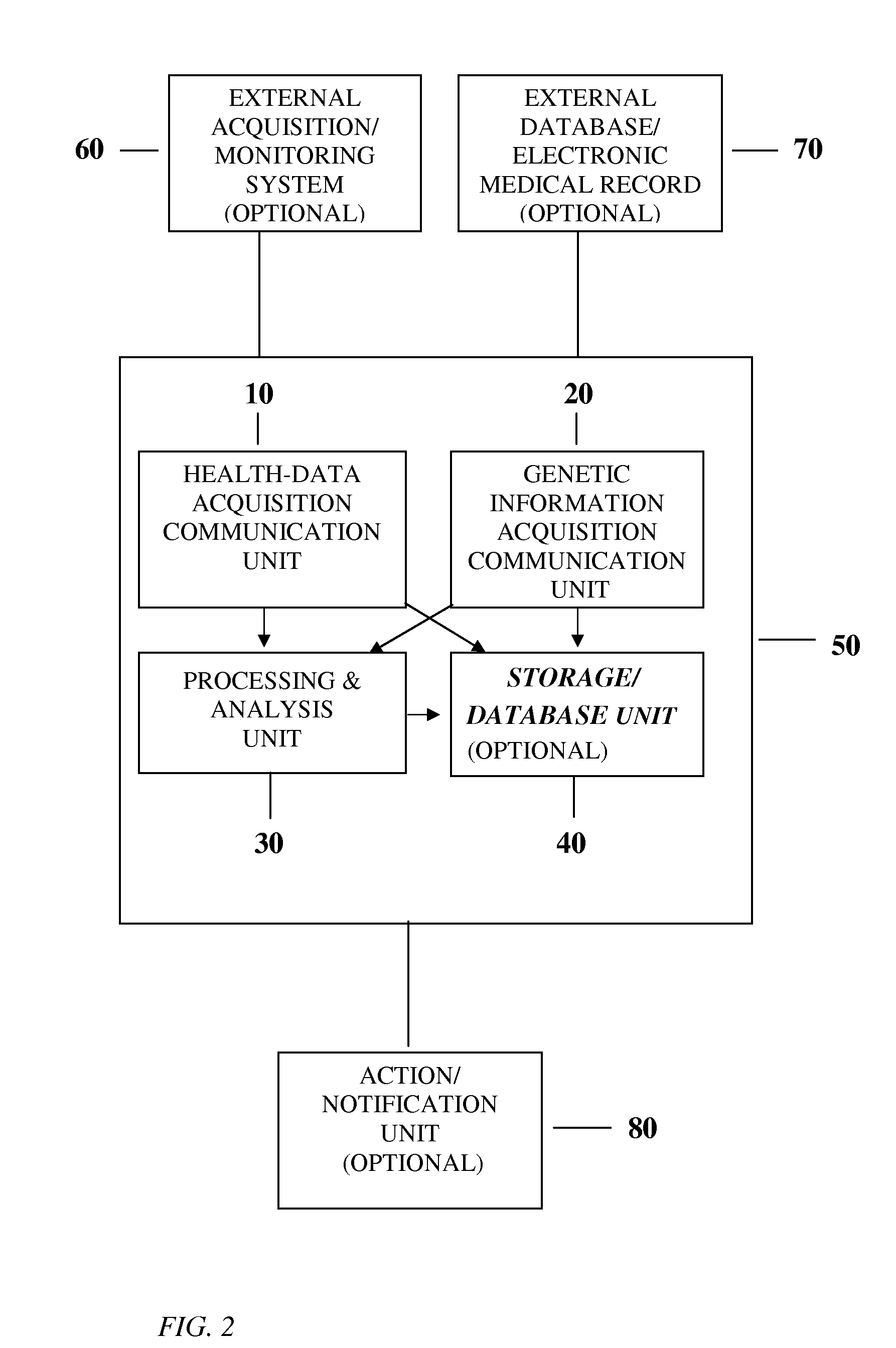Health data dynamics, its sources and linkage with genetic/molecular tests
a health data and dynamic technology, applied in the field of health data dynamics, can solve problems such as complicated dynamic tracking of systemic arterial pressure patterns, and achieve the effect of facilitating analysis of physiological origins
- Summary
- Abstract
- Description
- Claims
- Application Information
AI Technical Summary
Benefits of technology
Problems solved by technology
Method used
Image
Examples
example 1
Differentiating Genetic Etiologies of Brugada Syndrome
[0077]The results of the traditional heart rate variability (HRV) analysis in Brugada syndrome have been inconsistent. Since Brugada syndrome represents a polymorphic group of mutations, the inconsistencies could have resulted from the genotypic differences in the studied populations. The DPRL-Gene was tested in three genotypically distinct groups of individuals. DPRL-Gene provides a more detailed description of cardiac rhythm dynamics than the traditional HRV analysis by using multiple filtering cutoffs (scales). Therefore, DPRL-Gene captures scale-specific features that escape detection by the traditional HRV examination with a single cutoff value. Indeed, DPRL-Gene allowed detection of distinct patterns of cardiac rhythm in genotypically different populations with different prognosis.
[0078]In this example, DPRL-Gene quantifies patterns of cardiac rhythm in different genetic subtypes of Brugada syndrome by filtering the sequenc...
example 2
Differentiating Genetic Subtypes of Long QT Syndrome
[0088]The Long QT Syndrome (LQTS) is caused by mutations involving key cardiac ion channels. Different mutations are associated with specific modes of arrhythmia initiation and distinct changes in cardiac rhythm prior to these events. Some LQTS-causing mutations might involve the sinus node, leading to aberrations in cardiac rhythm. To test this hypothesis, the features of cardiac rhythm in 23 genotyped patients with LQTS and 14 matched controls were examined using DPRL-Gene applied to Holter ECG data. DPRL-Gene was applied with two, experimentally selected moving-average cutoffs, 75 ms and 2000 ms for 5-beat averages to show the differences in dynamic patterns between the subtypes of LQTS (FIG. 1).
Other Potential Applications of this Invention Include:
[0089]Analysis of patterns of T-wave alternans, repolarization and / or depolarization instabilities, QT-interval, and ECG patterns associated with different genetic variants and risk ...
PUM
| Property | Measurement | Unit |
|---|---|---|
| frequency | aaaaa | aaaaa |
| blood pressure | aaaaa | aaaaa |
| time- | aaaaa | aaaaa |
Abstract
Description
Claims
Application Information
 Login to View More
Login to View More - R&D
- Intellectual Property
- Life Sciences
- Materials
- Tech Scout
- Unparalleled Data Quality
- Higher Quality Content
- 60% Fewer Hallucinations
Browse by: Latest US Patents, China's latest patents, Technical Efficacy Thesaurus, Application Domain, Technology Topic, Popular Technical Reports.
© 2025 PatSnap. All rights reserved.Legal|Privacy policy|Modern Slavery Act Transparency Statement|Sitemap|About US| Contact US: help@patsnap.com



